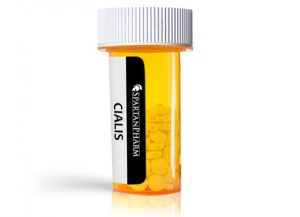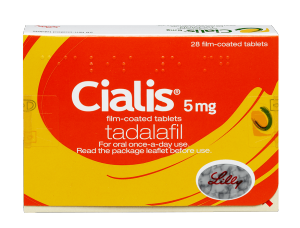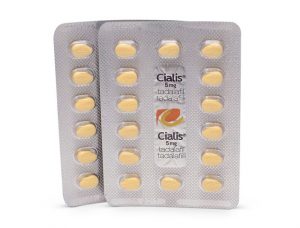Cialis is a widespread anti-ED medication with unique features. It can be used not only for ED but also against prostate enlargement (BPH). In this article, we will tell you about the Cialis dosage and choosing the right one for curing BPH and/or ED.
Cialis dosage – Key Features
 The medication is available in the following dosage sizes:
The medication is available in the following dosage sizes:
- 2.5 milligrams;
- 5 milligrams;
- 10 milligrams;
- 20 milligrams.
The cost of the medication depends on the tablet strength.
Cialis 5mg – A Dosage for BHP & Daily Use
Benign prostatic hyperplasia (BPH) or prostate adenoma is the most common, benign tumor in men. The prevalence of this condition increases with age. For example, in men aged 41 to 50 years, adenoma occurs in about 20% of cases. At the age of 51-60, the prevalence is 50%. At the age of 80 and over, 90% of men suffer from this ailment. But BPH with clinical symptoms (urination disorders) is less common, and its frequency increases with age. For example, at the age of 55, it is 25%, and among 75-year-old men, 50% have urinary disorders. The causes of prostate adenoma are not fully understood. Apparently, this disease has a multifactorial nature of occurrence and is hormonal-dependent. Experimental clinical studies have proven two factors necessary for the development of adenoma:
1) aging;
2) large amounts of the active metabolite of testosterone (dihydrotestosterone) in the body.
These factors, as well as the violation of the testosterone / estrogen ratio in favor of estrogen, circulatory disorders, and the slowing down of cell death in the prostate gland, lead to the growth of certain prostate sites with the development of symptoms of bladder irritation and compression of the enlarged prostate of the urethra and the neck of the bladder. As a result, the work of the muscle that drives out the urine is disrupted. Symptoms of the disease consist of obstructive and irritative ones.
 Obstructive symptoms include:
Obstructive symptoms include:
1) listlessness;
2) weakening of the urine stream;
3) intermittent urination;
4) difficulty urinating;
5) feeling of incomplete emptying of the bladder;
6) the need to strain the abdomen when urinating and other symptoms.
Timely detection of the causes and treatment of erectile dysfunction (prescribing PDE5 inhibitors in normal dosages) completely restores the potency in 98-99% of cases. However, one should not rely on self-treatment of erectile dysfunction at home. In most cases, this will only lead to a worsening of the situation and the progression of the disease.
To understand the mechanisms of the onset of ED, it is necessary to know the mechanisms of erection. So, an erection is the process of enlarging the penis and increasing its resilience during sexual arousal due to the stretching and filling of the blood into the cavernous bodies, which have a spongy structure. The peripheral and central nervous systems, as well as the smooth, musculature of the vessels, take part in this process. When experiencing sexual arousal, nerve impulses arise, leading to multiple increases in blood flow in comparison with the resting state. During this period, the pressure in the cavernous bodies of the penis considerably increases, which leads to compression of the veins. As a result, the outflow of blood decreases. The action of such a double mechanism (vasodilation of arteries and narrowing of veins) leads to an erection. Sexual arousal and stimulation maintain a high level of blood flow in the penis and create tension that is necessary to maintain sexual activity.
When the stimulation is stopped or after ejaculation (male orgasm), the blood outflows from the cavernous bodies, and the penis takes its usual shape and size. In the case of disturbances in the interaction of the body systems, the following signs of erectile dysfunction may appear:
1) insufficient erection for sexual intercourse;
2) inconstant erection during sexual intercourse;
3) complete absence of an erection.
Treatment options may vary depending on the forms of ED mentioned above. For example, the complete absence of an erection usually requires a max dosage of anti-ED medications.
The causes of erectile dysfunction are divided by specialists into organic (different diseases), psychogenic and mixed. Organic causes of ED include:
 arterial hypertension;
arterial hypertension;- diabetes;
- drug dependence and alcoholism;
- atherosclerosis;
- hormonal diseases;
- multiple sclerosis;
- spine traumas, etc.
Psychogenic causes include anxiety, overwork, disturbance of wakefulness and sleep regimes, psychoemotional stresses, and depression. The cause of erectile dysfunction can also be taking certain types of medications (anti-allergic drugs, blood pressure lowering agents, antidepressants, sleeping pills, and tranquilizers, especially in cases of exceeding the daily dosage), as well as long-term use of drugs aimed at treating chronic diseases.
The age can affect the quality of erection, but it is not the main indicator. In elderly people, the elasticity of the walls of the vessels, the decrease in the blood flow rate, the level of testosterone, and the decrease in the sensitivity of the nervous system affect the erection. But the main causes of the disease in most men are chronic diseases.
Cialis 10mg (as well as Cialis 20mg) is often used to treat ED as needed. That is, a man should take the pill 20-30 min before sex. He will achieve a prolonged effect during 1.5 days. Sometimes a 5mg tablet strength can be used for this purpose.
How to Choose the Right Cialis Dosage?
The most typical dosage of the medication is 10mg. The doctor can only select the correct dosage of the drug after a complete analysis of the patient’s health. In no case can you choose a dosage on your own. It can be dangerous for your health. In addition, an incorrectly selected dose increases the risk of side effects.
Cialis Maximum Dosage and Consequences of Overdosing
The maximum dosage of the medication is 20mg per day. If you exceed the indicated dosage, it may lead to an overdose. Symptoms of overdose include a sharp decrease in pressure, chest pain, etc. In the case of an overdose, a standard symptomatic treatment should be performed. With hemodialysis, tadalafil (the main component of the drug) is practically not excreted.
More About Our Website
Our site is not just an information portal about the medication. Here you can learn everything about the drug including application features, side effects, places for purchasing, places for acquiring a coupon, generic versions, and much more.
